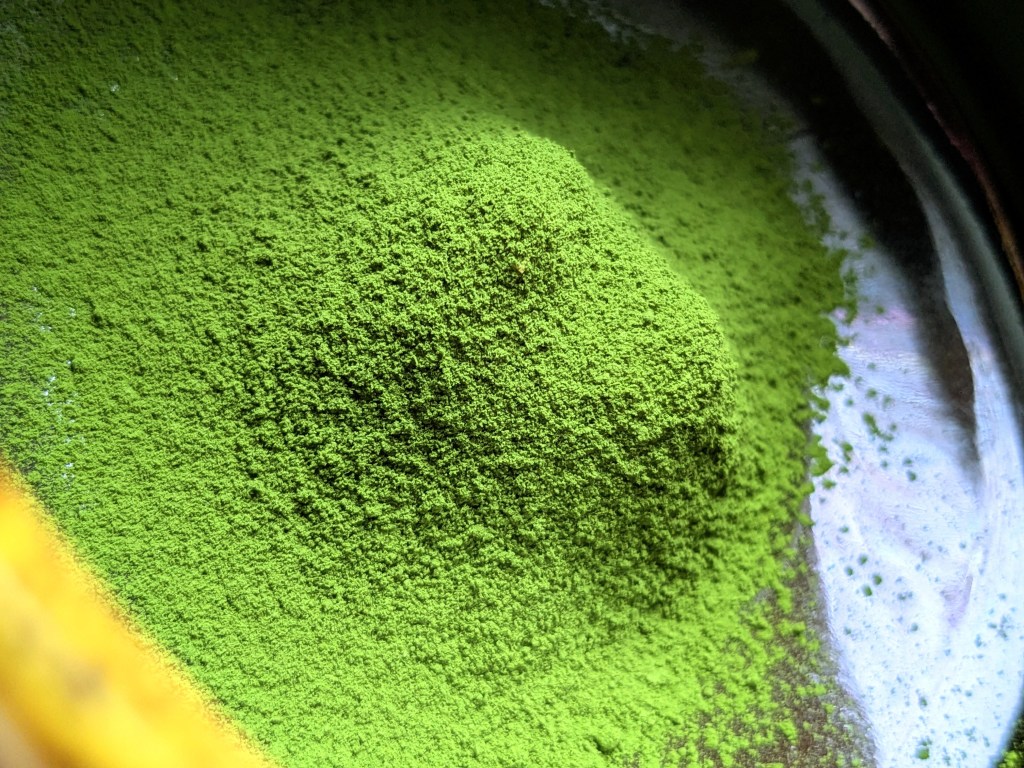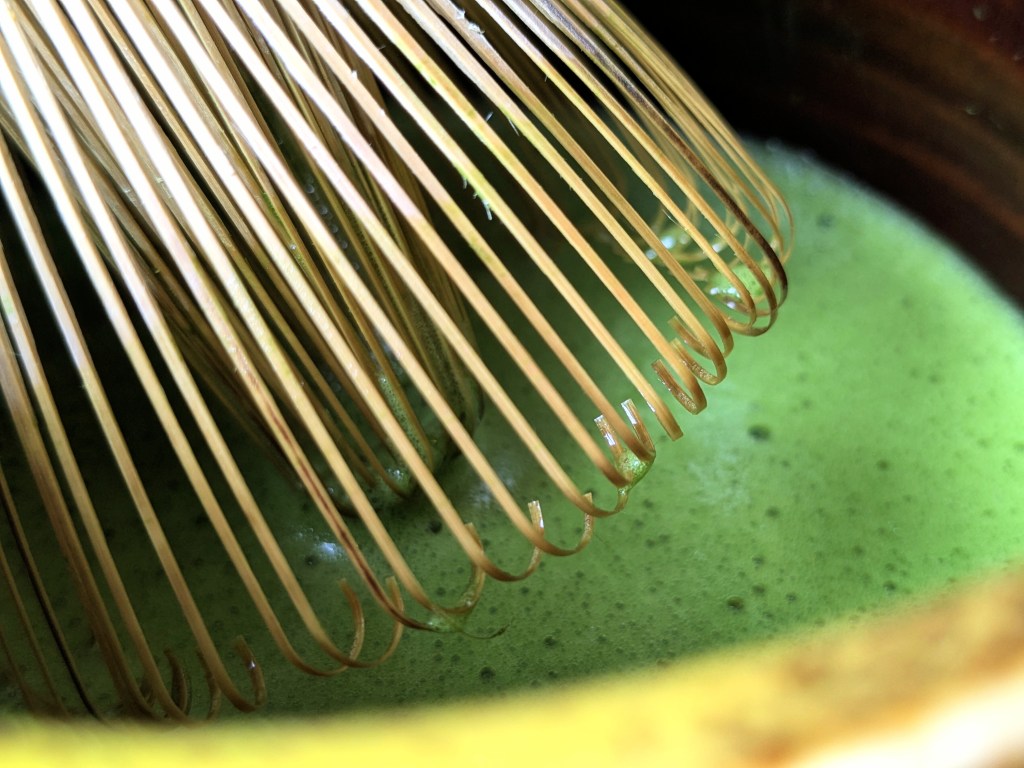We’ve found ourselves back at Matcha Monday again & this week I want to introduce you all to TeaPro (UK) and their Land of Fire – Matcha. This is a ceremonial grade matcha from the “Land of Fire” aka Kyushu Island, which is the southernmost and most volcanic Island of Japan. The green leaves for this matcha are harvested in early spring, shaded to maximise the sweetness and vibrancy before being stone ground.
One of the main reasons that Kyushu Island is referred to as the Land of Fire is due to the constant volcanic activity surrounding Kyushu where geothermal energy creates natural hot springs and fertile ash soils. Tea Pro’s matcha is grown near Kagoshima, which sits within view of the active volcanoes of Sakurajima Island, known as Cherry Blossom Island.

In it’s dry powdered form, this matcha is the colour of springtime grass, with a slight creaminess. With an aroma that has a mix of both savoury and sweet notes such as stewed fruits, puffed rice, roasted walnuts, roasted seaweed, buttered greens, freshly cut grass on a warm summer day & powdered sugar, there is creaminess present but it is on the light side.
Upon the addition of water, the colour changed from a once creamy spring time green to a much richer dark emerald green and with the visual change came a change in aroma, with the new notes of savoury wheat crackers with French butter, roasted crispy seaweed with sesame seeds, and freshly cut grass now sitting at the forefront.

I was slightly taken aback by the differences in aroma when it came to this matcha and wondered which of those notes I was going to find in the flavour profile of this tea. The answer definitely leans more towards the savoury end of the scale, with those notes most prevalent in aroma after the addition of water raining supreme, especially the notes of crispy roasted seaweed with sesame seeds. The wheat crackers with French butter were still present too, but not as prominent.
Some of the notes from the aroma of the dry powder are also present in taste, such as the notes of freshly cut grass on a hot summer day, puffed rice, and roasted walnuts. Sadly, however, the notes of stewed fruit and powdered sugar did not carry over.
There is both bitterness and sharpness present but neither are at a high enough level to affect my overall enjoyment of this matcha and instead help to provide balance.

I have tried this matcha prepared as Usucha (thin tea), Koicha (thick tea), on its own over ice, as an iced latte and I’ve experimented with different water temperatures. Personally I enjoy this the most as Usucha prepared with water at 65C. It is also fantastic iced, both on its own and as a latte. The bitterness and level of savoury sharpness, alongside the strong umami flavours mean that, for me, it was just a little too overwhelming when prepared as Koicha, but balanced when prepared in other ways.
Texturally, it initially had sharpness, however there is also a volcanic rock minerality and a dryness present. The sharpness is akin to the strong smell of freshly cut grass and pine, but it carried all the way through the mouth. There’s an underlying creaminess, but it is very subtle.
The finish is long lasting & while it starts with lingering notes of those somewhat sharp vegetals, it does slowly develop into a subtly sweet creaminess and has an underpinning puffed rice.

Art Pairing: Mount Aso in Kyushu (1935) – Hiratsuka Un’ichi
For this pairing I wanted to focus on finding a piece of art that was not only created by a Japanese artist, but also featured the Kyushu where this matcha is produced, to focus on how much the terroir (the complete natural environment in which a tea is produced) affected elements of the teas overall flavour profile such a the higher level of minerality present and the balanced levels of umami and bitterness, all of which are a direct result of the overall climate of the area and the composition of the soil.

When searching for art that featured Kyushu, I was introduced to the work of Hiratsuka Un’ichi, a Japanese woodblock printmaker, who was one of the prominent leaders of the Sōsaku Hanga (“creative print”) movement in 20th century Japan. When I found this woodblock print depicting Mt Aso in Kyushu, I knew I had found the perfect pairing for this matcha with it matching all of the parameters I had set out for this pairing.
The prominent feature of a bright yet creamy green across the entire middle ground of the print mirrors the colour of the matcha powder, with the slightly darker areas dotted areas representing the way in which the appearance of the matcha changes with the addition of water.
The soft, warm pink or light reddish-brown hue of the mountains is an unconventional choice but gives them a distinctive, almost otherworldly glow, almost as if it was picked purposefully to represent the underlying warmth of the volcano without directly depicting an eruption. The prominence of the mountain in this print is for me a fantastic visual representation of the unique minerality within this tea, with the chosen colour palette linking to the notes of puffed rice and wheat crackers, further strengthening the connection.
The solitary creamy white cloud in the otherwise clear sky, is for me an echo of the way in which creaminess transforms throughout the different steps of each session with this matcha, always present and noticeable but not overly prominent.
This was my first experience with any tea from TeaPro & I think it’s safe to say that they certainly made a fantastic first impression with this matcha. If you want to try it for yourself you can find it here on the Tea Pro website & if you want to treat yourself or a loved on to one of their matcha gift set, of which all the items featured in the picture in the post are a part of, you can find those teaware sets here.
Use code: kimberley10teapro or this affiliate link to get 10% off your next order with TeaPro. (I get a small commission when you use the code or link
Until next time. Happy Steeping – Kimberley
You must be logged in to post a comment.